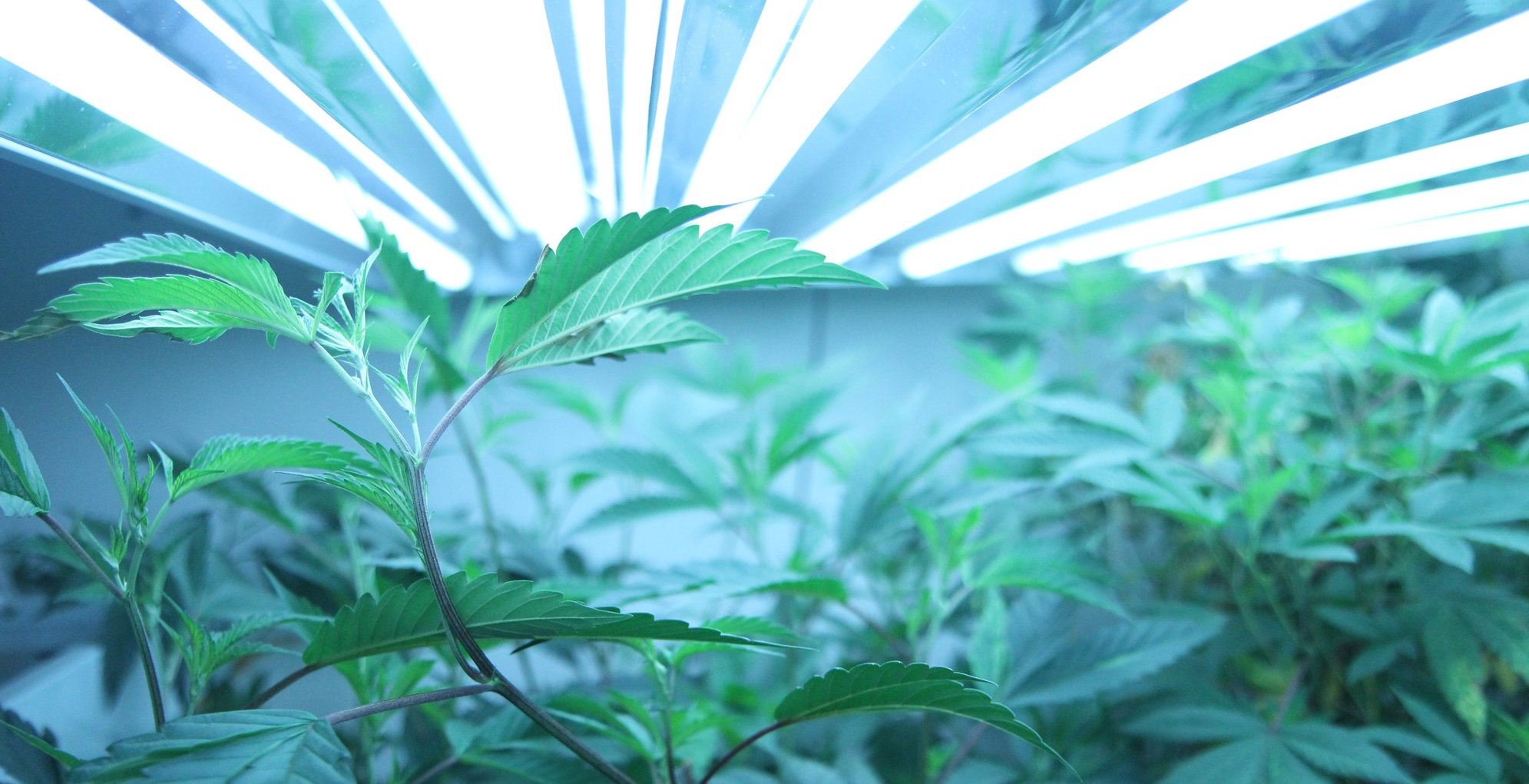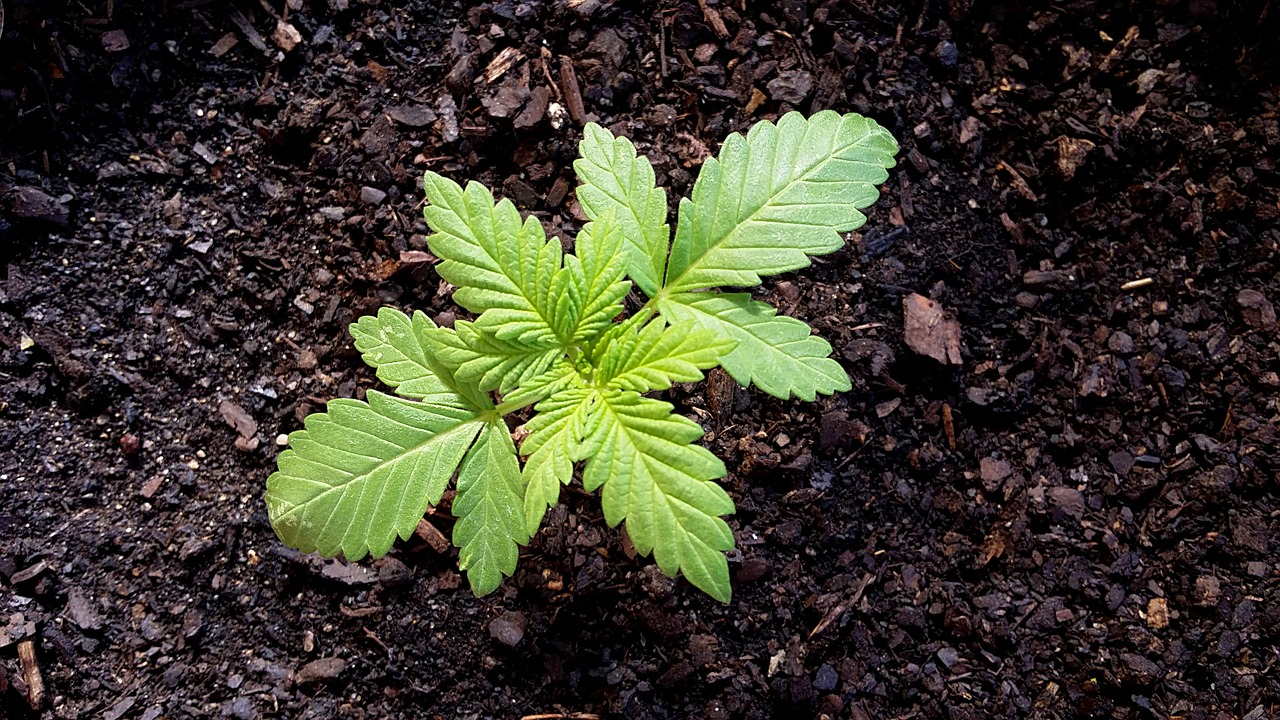Everyone makes mistakes, especially when they are just starting out. Through experience and knowledge, mistakes will become less common and you will see greater success from your growing endeavours. Whether you are a brand new grower or an experienced one, set yourself up for success by being aware of the 7 major mistakes made by cannabis growers – and how to mitigate them.
1. Unsuitable Environment Control
The first major pitfall to affect the success of a grow operation relates to proper climate control. This relates to both temperature and humidity. While many growers tend to focus on the first, they often forget about the latter – humidity.
Firstly, if your garden is too hot or too cold it will effect your plants growth; too cold will result in stunted plants or cause them to die off. However, if the temperature is too warm, they can develop heat stress, produce unhealthy buds and/or die off. The ideal temperature for cannabis is between 66 to 76 degrees Fahrenheit / 19 to 25 degrees Celsius.
Humidity is another important climate component, which is often forgotten about or not controlled as meticulously as temperature. This typically relates to new growers or home operations not investing in proper humidity control equipment, such as a dehumidifier and humidity gauge. Regardless of whether you are operating indoor, outdoors or in a grow room or greenhouse, the humidity should be kept between 40% and 70%; starting at 60% and reducing to 40% is considered to be good practice. When humidity is not properly managed, plants are susceptible to growing mold, mildew or even rot when combined with a temperature that is too high.
If you are investing time and money into growing cannabis, ensure that proper climate control is at the top of your list so that your endeavour reaches optimal success.
2. Not Enough Light

The second on our list of mistakes made by cannabis growers relates to lighting – either not having enough of it, or having your lamps positioned improperly. Cannabis plants need a lot of light in order to produce bud.
Many growers, especially beginners, often have proper lighting but have it positioned incorrectly to be of benefit to the plant. Many factors play into how your grow room lighting should be positioned, and how much is required. You need to consider the lighting itself (LED, HID, fluorescent) as each has their own unique output. As well, considerations should be made to the size of the room and the number of plants.
A good rule of thumb is to place the plants as close to the lights as possible, without exposing the top of the flowers to temperatures above 28-29 degrees. Depending on the lighting choice, plants may need to be kept a larger distance away to avoid heat stress. However, if you have an LED or similar set-up, whereby the bulbs do not produce as much heat, you can have them closer to the plant.
While you may not need to run out and buy dozens of new lamps, remember that the amount your plant produces is directly related to the amount of light it receives.
3. Overfeeding Cannabis Plants
A classic mistake made by newer growers is to overfeed their plants. New growers are often very excited and, as such, can be impatient and become concerned when buds do not develop fast enough – therefore, causing them to overfeed. However, this does not produce growth and can actually cause your plants to die off instead.
There are two types of nutrients that cannabis plants can use – non-organic and organic.
- Organic Compounds: Organic compounds are the refined minerals found in soil, manure and compost. These nutrients are released slowly when applied; therefore, they are not readily available for your plant to consume in excess and are a great starting point for novice growers.
- Non-Organic Compounds: Non-organic compounds are another source of nutrients for your cannabis plant. These compounds are easily bought at gardening stores and provide a boost to your plants in the form of concentrated minerals and nutrition. As such, non-organic nutrients are easily taken in by your plant and can easily result in overfeeding.
If you feel that your plant is not getting enough nutrition from organic compounds, you can add vitamins. If you choose to do this, be careful! Start low and slow and be sure to continually monitor your plant for signs of stress.
4. Overwatering Cannabis Plants
Following overfeeding is overwatering, which can also cause your flowers stress and even cause them to die. Many growers, even experienced ones, can find themselves concerned about whether their plants are getting enough water. The initial signs of overwatering will result in droopy plants. However, if you fail to notice this and continue to water, it will cause the roots to suffocate or result in rot, which is very hard to fix.
In order to avoid this mistake, ensure the top inch of the soil is bone-dry. If it is, you are okay to water your plants. If not, the plant has enough water and does not need any more at this time. You can also wait and see if your plants begin to wilt to determine whether they need water, but this will cause them stress that may otherwise be unnecessary. As you become more experienced, it is a good idea to develop a watering schedule.
Remember though, as your plants grow so will their need for water, but add slowly.
5. Not Managing pH Levels

There are a lot of things to remember if you are a new, or even an experienced cannabis grower. pH level is an important aspect for growing, but it is complex and often ignored by novice growers. However, it is vital to your plant growth as pH determines the nutrients your plant can uptake. Therefore, it is number five on our major mistakes made by cannabis users.
pH is vital to your plants as, when it is correct, your flower has access to any nutrient they need. However, if it is incorrect, it damages your plants ability to absorb crucial minerals. Falling outside of this range can result in water that is either too acidic or lacking in acidity, leading to nutrient deficiencies.
If you have a soil-based garden, a pH level of 6.0 to 7.0 is ideal for cannabis. For those individuals growing in a hydroponics environment, pH should be slightly lower at between 5.5 and 6.5.
pH testing kits are common for gardeners, fish hobbyists and even to check hot tub levels. This means they are cheap and easy to come by, making having an incorrect pH level not only a mistake major, but an easily preventable one.
6. Wrong Sized Containers
For new growers or even experienced ones trying a new strain, the proper sized pot is essential for growing indoors. Marijuana plants can grow quickly, but as the roots grow faster than the flower itself, they can become “rootbound”. This means the roots have reached the edges and bottom of the container and cannot continue growing to support the plant. This will result in the plants dying if not moved to a larger container quickly. Ideally, cannabis plants should have 2 gallons per 12″ of height. However, you also need to take strain into consideration as some will be wider and may require more room for roots.
Here is a basic outline for container size comparable to final plant size:
- 12″ mature plant needs a 2-3 gallon container
- 24″ mature plant needs a 3-5 gallon container
- 36″ mature plant needs a 6-8 gallon container
- 48″ mature plant needs a 8-10 gallon container
- 60″ mature plant needs a 12+ gallon container
If you don’t have a lot of space or have height restrictions, Indica plants are a great option. Indica has an average height of 3 to 6 feet (36” to 72”), which is ideal for indoor growing. Sativa, on the other hand, can easily grow to 20+ feet in height. Therefore, they are best suited for outdoor gardens.
7. Harvesting Too Early

This is another of the critical mistakes made by cannabis growers. Often made by novice growers, it can also happen to experienced individuals who may be trying out a new strain.
Typically the average grow time for indoor cannabis is 3-5 months from seed to harvest. However, it can be anywhere from 8 weeks to 7 months depending on the strain and the conditions. Most strains have a 2-3 week harvest window. This ensures plenty of time to be sure that your plants are ready for harvest before you take them down. In fact, waiting an extra week or two can result in 10-30% more bud! Click here to read our article on when to harvest for a more in-depth explanation.
When you are ready to harvest, an automated trimming machine such as the CenturionPro Tabletop or Mini are perfect for smaller operations. Hand trimming is great if you love manual labor but automated trimmers take the hassle out of trimming. Plus, they greatly speed up the process! Our machines have comparable quality to hand-trimmed product, plus you can easily trim wet or dry depending on your preference. Click here to learn more!
Get Growing!
Providing your plants a well-managed environment with proper lighting, optimal nutrition and water and room to grow is crucial for the success of your garden. Whether you are a novice or an experienced cannabis connoisseur, avoid these major mistakes made by cannabis growers and watch your plants flourish!



